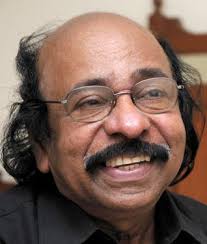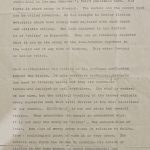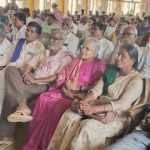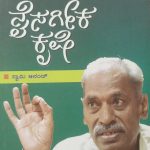Of Dalit life and resistance- K.SATCHIDANANDAN
[Review of English translation of ‘Kusumbale’ by K. Satchidanandan, Malayali poet, translator, bilingual critic and former secretary of Central Sahitya Akademi in FRONTLINE June 26, 2015. FRONTLINE ಜೂನ್ 26, 2015ರ ಪತ್ರಿಕೆಯಲ್ಲಿ ಮಲೆಯಾಳಿ ಕವಿ, ಅನುವಾದಕ, ದ್ವಿಭಾಷಾ ವಿಮರ್ಶಕ ಮತ್ತು ಕೇಂದ್ರ ಸಾಹಿತ್ಯ ಅಕಾಡೆಮಿಯ ಮಾಜಿ ಕಾರ್ಯದರ್ಶಿ ಕೆ.ಸಚ್ಚಿದಾನಂದನ್ ಅವರು ಇಂಗ್ಲಿಷ್ ಅನುವಾದಿತ ‘ಕುಸುಮಬಾಲೆ’ ಕುರಿತು ಮಾಡಿರುವ ವಿಮರ್ಶೆ.]

THROUGH MY WINDOW
[K. Satchidanandan is a Malayalam poet, translator, academic and bilingual critic and former Secretary, Sahitya Akademi.]
Two novels that in their own ways go beyond the established canons, not only of Dalit narratives, but of the Indian novel in general, and point to the future course of the genre, where it frees itself from Western models—both realist and modern—and creates its own narrative modes and critical norms.
Dalit writing in India has come a long way since its beginnings in the late 19th century and its flowering in the closing decades of the 20th. While in the beginning it was struggling to find a way to articulate the agony and anger of the outcastes, later it began to be more conscious of its artistic mission even while keeping the original concerns intact. It also began to take a positive look at Dalit history, myth and folklore and affirm the unique power and beauty of Dalit values and Dalit imagination. This at times meant a liberation from the realist mould through a retrieval of the mythical and folk imagination one finds in Dalit fables, songs and mythologies specific to communities. Another impact of this new turn was the breaking of the monolith called the “Dalit” and the discovery of several communities and subsects that the term had subsumed and in a way concealed. Writers now began to look at the diversity and even internal conflicts within the larger Dalit community and the specificity of each caste or group in terms of experience as well as imagination.
This new stage of social and aesthetic awareness seems best represented in two novels published recently in English translation: Devanoora Mahadeva’s Kannada novelKusumabale translated by Susan Daniel and Cho. Dharman’s Tamil novel Koogai:The Owl translated by Vasantha Surya (both published in 2015 by Oxford University Press, the former edited by Mini Krishnan and Chetan Ahimsa and the latter by Mini Krishnan). While the first novel is lyrical and is deeply informed by folklore, the second has a mythical dimension provided especially by the mysterious Koogai, the owl-god. Both the novels ultimately deal with Dalit reality, but in such innovative ways as to help redefine the idea of the novel itself. Both the writers are blessed with a deep sense of humour, astonishing powers of observation, a markedly poetic imagination and a profound awareness of the forces of oppression and resistance that shape Dalit lives as lived in various ways by different communities. Both the works pose a great challenge to the translators as they use community slang and dialect—like the Nanjangud dialect inKusumabale or the Tirunelveli-Kovilpatti dialect in Koogai—and have huge chunks of poetic passages and even poetry itself. Judging by the result, the translators and editors have not done badly at all and deserve our gratitude for bringing these rare works to the notice of a larger audience outside their original languages.
Kusumabale has fascinated and scared translators alike for some decades now since its publication in 1988, and the translators who aspired to do English versions, and in one case almost did one, include Polanki Ramamoorty, Rowena Hill, Judith Kroll and A.K. Ramanujan, all of whom knew that this novel did not just offer Dalit experience but represented Dalit sensibility. But it was for Susan Daniel to finally come up with a complete translation that strove to capture the nuances of the original that has already been recognised as a masterpiece in Kannada for a quarter century, whose admirers included U.R. Ananthamurthy, Sheldon Pollock and Ramanujan.
The narrative device used in the novel is based on an old faith that the guardian-lamp spirits inhabiting various homes meet at the midnight hour and exchange tales—a device that Chandrasekhara Kambar has also used cleverly in one of his plays. The novel begins where a spirit who has come back after a 12-year gap joins them and all of them begin to talk about what they have been witness to in the homes they inhabit. The world of these spirits is almost an alternative to the real world of injustice and oppression as they are guided by a strong sense of justice, as is evident from the perspectives from which they narrate the domestic episodes.
This opening is definitive in many ways: it defines the ethics underlying the narration; it also helps the narrator present the reality of the world from many points of view, always with detachment and the humour it allows. The characters are fascinating, too: the old lady Thuramma, who waits throughout the night to battle her fate about whose form she has no clear idea; Yaada, who transforms from a poor village lad into a rich man; Kuriyaiah, through whom the truth of Dalit life speaks as the Dalits get organised for justice, for example. What is important to note is the novelist’s own world view where everything in the world is part of a larger system that also includes nature. He creates a world where spirits can speak, even a cot has a living spirit within it, grief has a visible form, and Fate has a describable appearance.
The novel reaffirms the Indian narrative tradition of fables like the Panchatantra or riddlesome narrative chains like the Vikramaditya tales where objects from statues to pillows tell stories. But it does not stand out as a technique here; instead, it becomes a natural, living experience that embodies the vision of an organic cosmos where everything is interrelated.
Mahadeva also finds an original idiom to articulate this vision that mixes prose and lyric. Thus the significance of this novel goes far beyond the sociological, unlike a lot of Dalit writing. It marks an aesthetic turn in Kannada narrative tradition creating a new style, design and structure for novel. Though Mahadeva’s oeuvre is not big in terms of volume—a long story, a collection of short stories, a volume of essays besides the novelKusumabale—his impact on the younger generation has been quite remarkable as he transcended the Western narrative models of earlier Kannada novelists—great no doubt—like Shivarama Karanth and Ananthamurthy in his works through folklore and fable, thus retrieving to Dalit imagination its innate strength and native beauty. This retrieval is closer to what the Latin American writers of the great boom did to fiction than to what the European modernists had done as it enlivens fiction by infusing myth and mystery into it.
The young Kannada fiction writer Vivek Shanbhag in his informed introduction to this translation compares Devanoora to Juan Rulfo both for writing less and writing new. He could do this as he knows Dalit life and world from within unlike those who wrote about it from outside the community. That frees him from the simple conventional binaries. Almost all the communities are involved in the murder of Channa, for example, and the narrative unfolds through the tales of Yaada, Somappa and Kusuma. The death casts its shadow on every episode in the novel, and yet it is not a dark and morose world: there is plenty to laugh at and laugh about, like when by a weird logic Garesidda the Dalit not only legitimises his stealing of tender coconuts as dharma demands that the thirsty be offered water, but even earns one rupee by grabbing the one hundred and one rupees offered by the teacher as a compensation for tying up and flogging Garesidda and offering one hundred from the same money as the price of the tender coconuts claiming they may think he has just borrowed it and will repay that one day. Even the Dalit leader watching this is astonished by the subversive act and the cunning calculations of Garesidda. The narrative has no single centre and the language is a mixture of prose and poetry.
The direction of the narrative is evident in the very opening chapter, “…and so it was”: “Akkamadevi who left her parental home the very day after her husband’s last rites, returns six years later with the sprout of her womb, Yaada—born to a bond servant, ‘t was said twelve months after her husband’s death—to claim a share of the property. Furious, her brothers-in-law, Basappa Somi and Siddura, fling her on to the grazing grounds. On that same spot a hut rose around Akkamadevi. And as Yaada, coupled with his clever ways, grew in strength, this hut also grew, and the houses of Basappa Somi and Siddura in turn became its cattle sheds. This Yaade Gowda’s son Somappa is the big man of the village. Kusumabale is the daughter of this big man. Following the birth of Kusuma’s child, Kusuma and Channa’s secret affair is out in the open, and Channa is done to death, and no one is in the know. Then, while the whole village is getting ready for the fire-leaping festival, Turamma, Channa’s relative, is battling with Mother Fate to keep alive daughter Kempi’s infant child. Also Kempi’s step-sister, the forlorn Eery, is at pains to save her own wasting child. So, too, with no wind of Channa’s murder, Channa’s relatives anxiously await his return.”
The chapters that follow unfold this narrative in full through the tales exchanged by the Jothammas, the House Lamp Spirits. Some of the chapters are almost entirely in verse (eg: ‘it also came to where Kusuma lay…’) and all the chapter titles read like lines of verse. At times the novelist mixes languages—English or even French with Kannada—to good effect as in “That illiterate Kusuma in French, she said, / Je veux etre dans ma maison/ ‘I want to be in my home, be in my home’, she said.” Here is a Dalit novel that is free from sloganeering, magically capturing the Dalit spirit in its imaginative vitality and linguistic creativity.







